Small front yards present both a challenge and opportunity. You want plants that don’t overwhelm the space, but still bring charm, structure, color, and year‑round interest. Shrubs are ideal: they provide structure, can be evergreen or flowering, and many dwarf or compact varieties are especially suited to small yards. Here are six shrubs that are well‑suited for compact front gardens, along with precise details and planning tips so they enhance your home’s curb appeal without crowding it out.
What to Look for in Shrubs for Small Front Yards
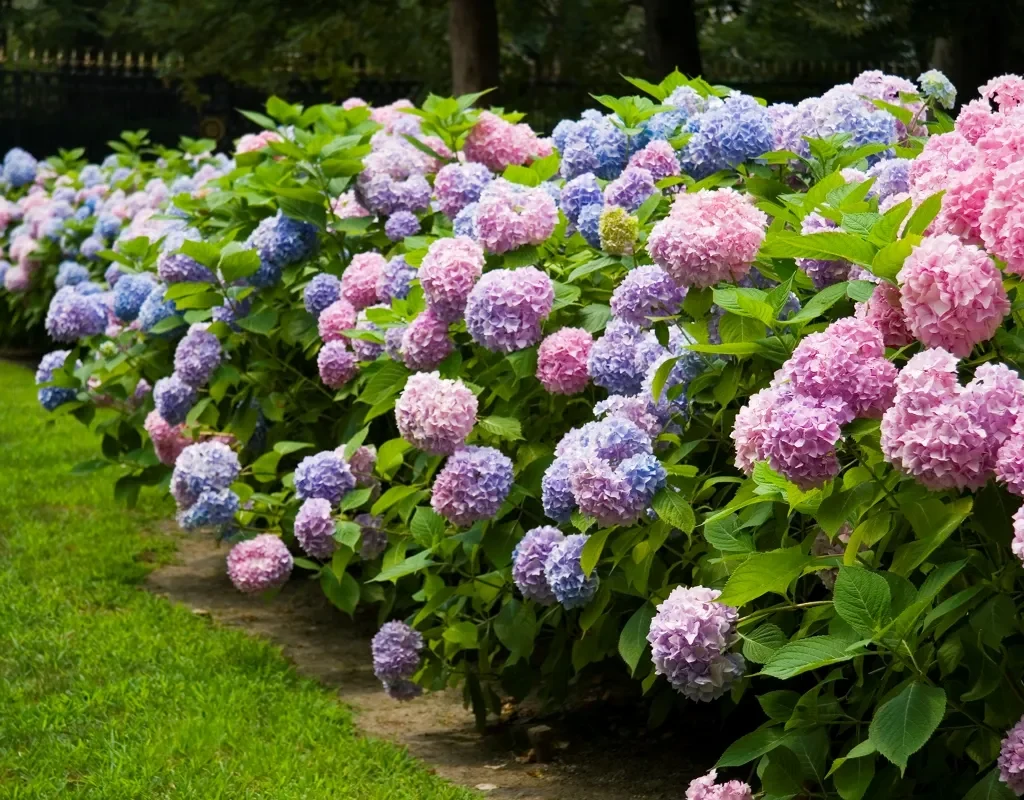
Before diving into the shrubs themselves, take note of important criteria that make or break a good shrub for a small front yard:
- Mature size: height and spread when fully grown. Must stay modest so as not to block windows, walkways, or overwhelm the house’s facade.
- Growth habit: rounded, compact, or columnar (narrow) forms are better than wide-spreading or partially drooping types.
- Evergreen vs deciduous: evergreen provides year-round greenery; deciduous may give seasonal interest (flowers, color) but will leave gaps in off‑season.
- Blooming & foliage interest: to deliver beauty beyond just shape—flowers, fragrance, berries, colorful leaves help.
- Maintenance needs: pruning, watering, soil, pests. Low maintenance is more forgiving in small spaces.
- Sun/shade tolerance and soil adaptability per your front yard’s conditions (sun exposure, soil type, rainfall, etc.).
6 Shrubs Perfect for Small Front Yards
Here are six excellent shrub choices. Each includes strengths, limitations, and tips for placement.
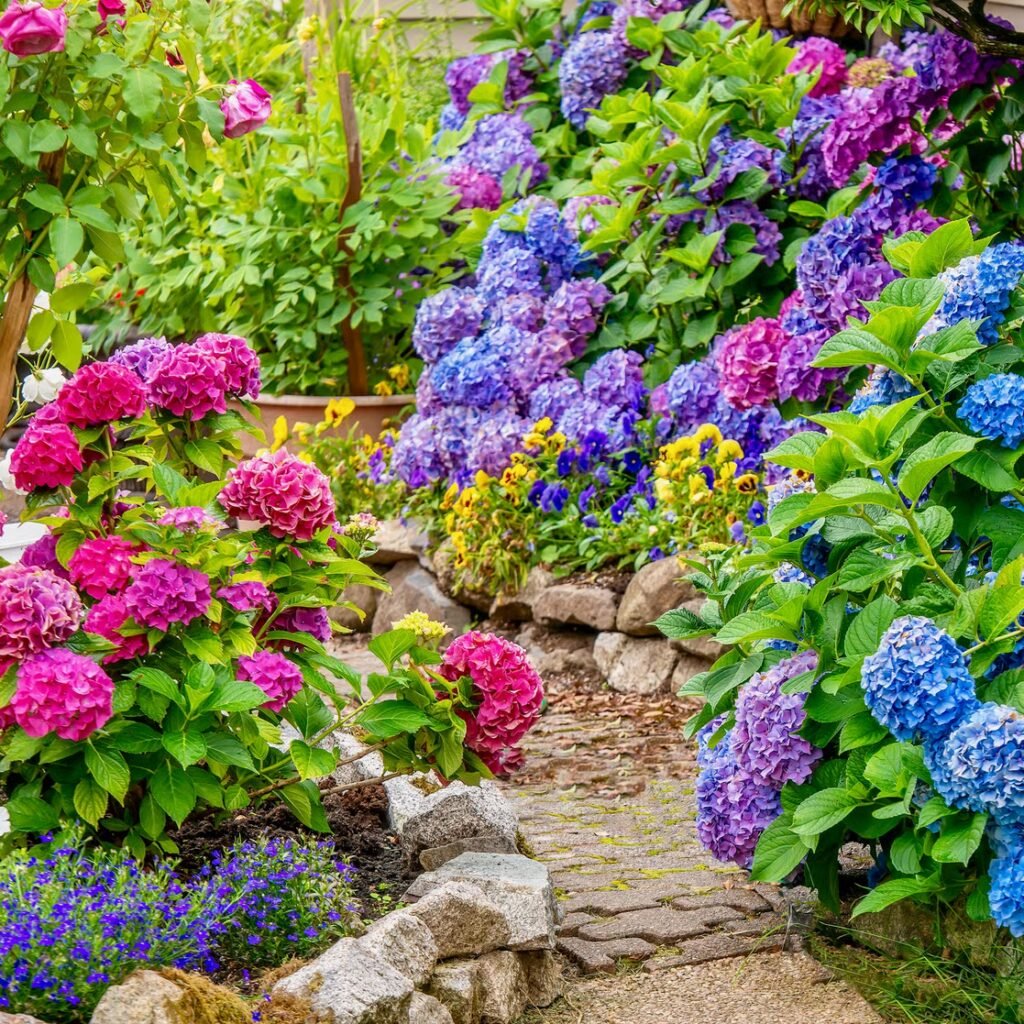
1. Boxwood (Buxus spp.)
Why it’s great:
Boxwoods are classic evergreen shrubs. Many dwarf or compact varieties stay at heights of 2‑4 feet (≈ 0.6‑1.2 m), with a similar spread. Their dense, uniform foliage makes them excellent for formal looks, hedges, edging, or as foundation plantings. They’re evergreen, so provide structure and color year‑round. They respond well to shaping and pruning to maintain neat form.
Ideal conditions & care:
- Light: full sun to partial shade. Too much shade can lead to thinner, leggier growth.
- Soil: well‑drained, with good fertility. Avoid waterlogged soils.
- Water: regular watering until established; then moderate. Mulching helps retain soil moisture.
- Pruning: light pruning in late spring or early summer to shape; trim lightly across the season if needed. Avoid heavy pruning late in growth season in frost‑prone climates.
Placement tips:
- Use boxwoods on either side of walkways or the entrance door for symmetry.
- Combine with low flowering border plants in front to soften the base.
- Consider smaller cultivars (“dwarf boxwood”) if space between house/walkway is tight.
2. Lavender (Lavandula angustifolia and cultivars)
Why it’s great:
Lavender brings fragrance, color, and a Mediterranean touch. Many dwarf or compact varieties stay around 1‑3 feet tall and wide. Silvery‑green foliage, spikes of purple (or white/pink depending on cultivar) flowers, and its pollinator‑friendly blooms make lavender a wonderful accent in a small courtyard or along a front boundary.
Ideal conditions & care:
- Light: full sun is best—needs a lot of sunlight to flower well and avoid fungal issues.
- Soil: very well‑drained, slightly alkaline to neutral; gravelly, sandy soils are better. Heavy or compacted soil is problematic.
- Water: moderate; once established, lavender tolerates drought well but will suffer if roots stay wet.
- Pruning: trim spent flower spikes; after flowering, lightly shape to prevent it getting woody and leggy.
Placement tips:
- Use lavender along pathways or the front border where you can see and smell it.
- Plant in raised beds or well‑drained soil to prevent soggy roots.
- Pair with grasses or low perennials to soften its more woody structure.
3. Dwarf Japanese Holly (Ilex crenata ‘Helleri’ or similar compact forms)
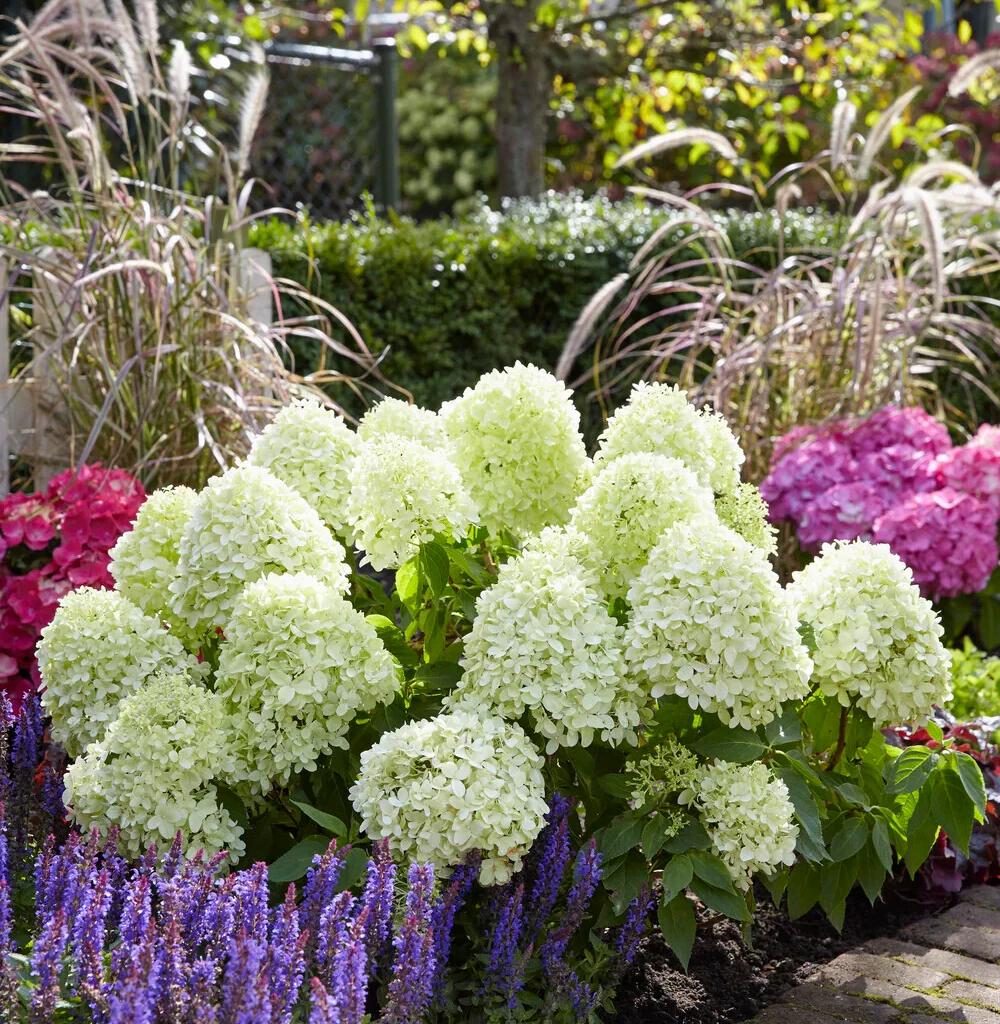
Why it’s great:
Japanese hollies are evergreen with fine texture. Their small, glossy leaves create a refined appearance. The ‘Helleri’ and other compact cultivars often remain around 2‑3 ft tall and wide. They work well as low hedges, foundation shrubs, or accent pieces. Because they keep their leaves through seasons, they are excellent for providing a green backdrop for seasonal flowering or foliage shrubs.
Ideal conditions & care:
- Light: tolerates partial shade well, though flowering (if applicable) better with more light.
- Soil: well‑drained; neutral to slightly acidic; fertility moderate.
- Water: regular watering early; once established, fairly drought‑tolerant but should not dry out entirely.
- Pruning: minimal; occasional shaping; remove dead or mis‑shapen branches.
Placement tips:
- Great when planted as a border under windows or in front of porch steps.
- Because it is low and neat, it helps maintain sightlines.
- Mix with flowering shrubs so that during flowering seasons you have color, and Hollies provide greenery during off seasons.
4. Spirea (Spiraea japonica and compact cultivars)
Why it’s great:
Spireas are beloved for their profuse and showy flower clusters (often pink, white, red), compact growth, and changing foliage color in autumn. Many compact spireas reach around 2‑3 feet (≈ 0.6‑0.9 m) in height, with spread in similar range. They bloom in spring or early summer (some repeat bloomers exist), and their growth is forgiving and easy to maintain.
Ideal conditions & care:
- Light: full sun to partial shade—flowers best with more sun.
- Soil: well‑drained, fertile soil; tolerates a variety of soils.
- Water: regular moisture until established; moderate afterward. Mulch will conserve moisture.
- Pruning: after flowering (for spring‑blooming types) to shape; can be sheared lightly to delay woody, unproductive stems.
Placement tips:
- Use spirea along the front bed where color is needed; as mid‑border filler.
- Combine several for seasonal color, especially as contrast with evergreen shrubs.
- Use smaller cultivars in narrow beds or walkways.
5. Hydrangea (compact or dwarf varieties)
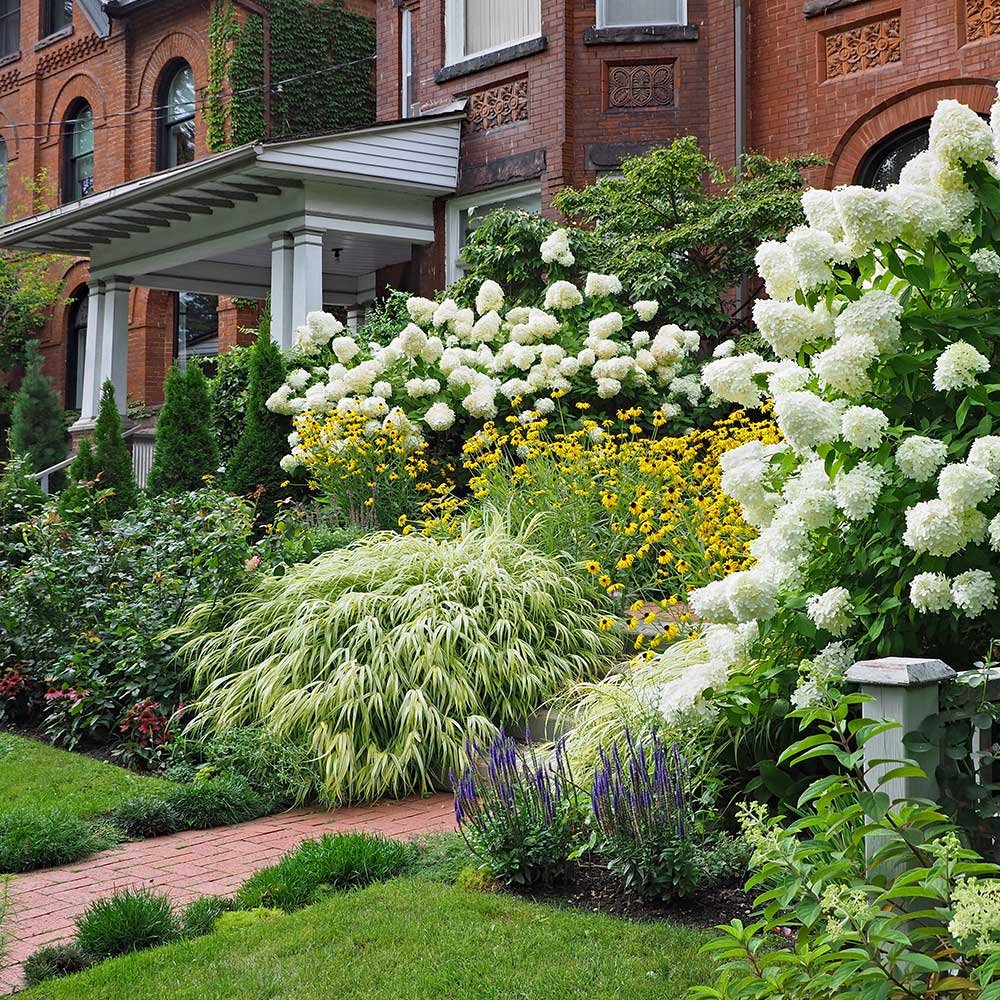
Why it’s great:
Hydrangeas are stunning for their large, showy blooms and their ability to fill space visually. Compact/dwarf hydrangeas stay smaller and are ideal where you want impact without taking over. Their flowers come in shades of white, pink, blue (sometimes depending on soil pH), adding bold but soft focal points.
Ideal conditions & care:
- Light: morning sun with afternoon shade in hotter areas; avoid scorching midday sun.
- Soil: rich, moist, well‑drained; organic matter helps retain moisture while maintaining drainage.
- Water: more water when flowering; mulch to reduce evaporation.
- Pruning: varies by type—that is, whether they bloom on new or old wood. Dwarf types often are more forgiving. Deadhead spent blooms; prune lightly to shape.
Placement tips:
- Use near entrances, corners, or where their larger blooms can be appreciated.
- Combine with lower shrubs to frame them or with groundcovers so base is softened.
- Be cautious about placing them where their wet foliage or heavy blooms can touch walls; leave enough space.
6. Japanese Skimmia (Skimmia japonica)
Why it’s great:
Japanese skimmia is an elegant evergreen shrub that works well in shade or part shade, which is helpful for front yards that don’t get full sun. It features glossy, dark green foliage that remains through winter, and in spring produces fragrant clusters of white or light‑pale pink flowers. Female plants may produce red berries (if male pollinator plant is nearby), adding winter interest. It generally stays around 3‑4 ft tall and similar width for many cultivars, making it manageable for small front gardens.
Ideal conditions & care:
- Light: partial shade to full shade; avoid blazing sun especially in hot climates.
- Soil: acidic to neutral; rich in organic matter; well‑drained but moisture‑retentive.
- Water: regular moisture is important; drought can stress the plant. Mulching helps.
- Pruning: minimal—light shaping and removal of weak or crossing branches in spring; avoid heavy cuts.
Placement tips:
- Good under shady porch overhangs, small beds along shaded side walls.
- Plant in areas where winter asters or other seasonal flowering plants can complement its evergreen foliage.
- The berry‑producing forms are especially attractive near entryways or where birdwatching is a delight.
Design Tips: Using These Shrubs Together
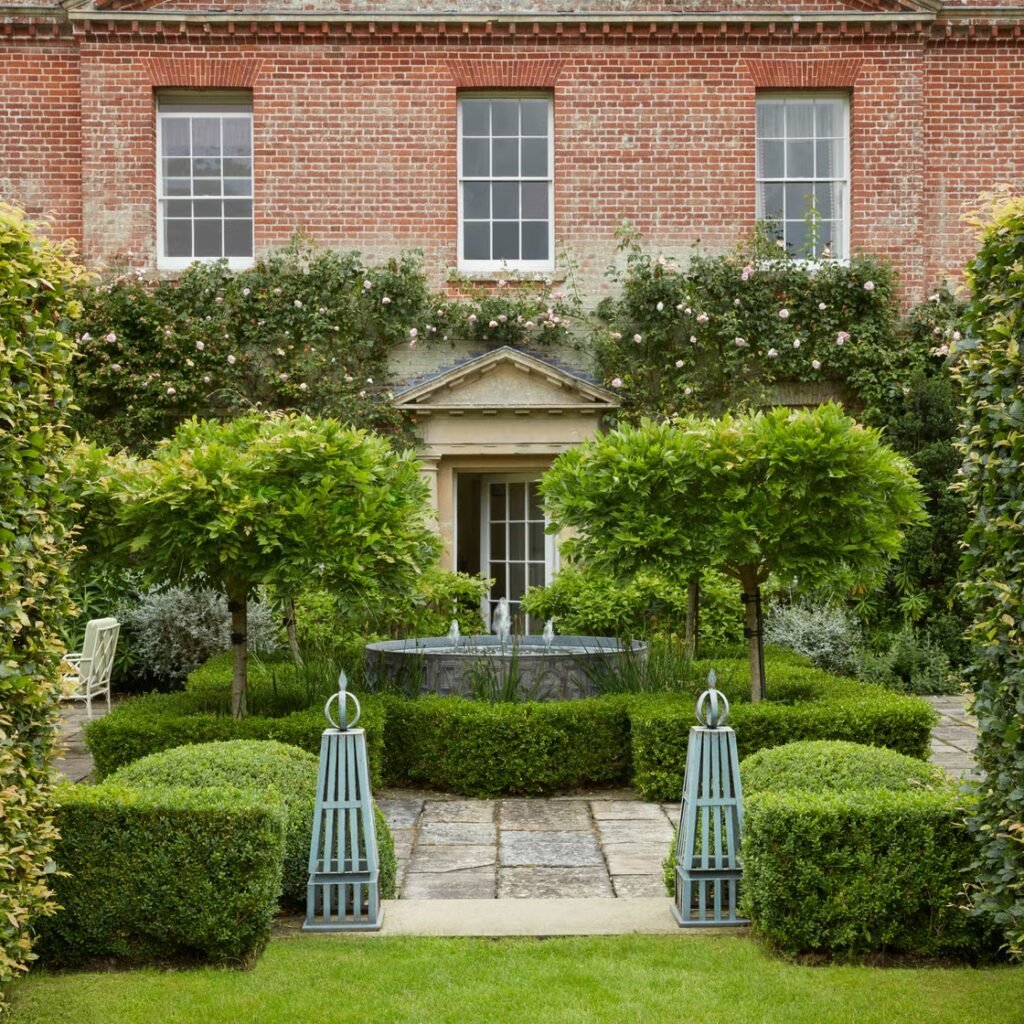
To make the front yard look cohesive, balanced, and low‑maintenance, here are some planning and layout ideas:
- Layering & Scale
Use low shrubs (Lavender, Spirea) in front near the sidewalk or edges. Slightly taller ones (Skimmia, compact Hydrangea) behind them. Ensure you can see house features (doors, windows) clearly—don’t block. - Evergreen + Seasonal Combinations
Mix evergreens (Boxwood, Skimmia, Japanese Holly) with flowering or seasonal color shrubs (Spirea, Hydrangea, Lavender). Evergreens give structure year round; the others give bursts of color and interest. - Color, Texture & Fragrance
Combine textures: fine foliage (Lavender) with glossy leaves (Holly), and large floret blooms (Hydrangea). Use fragrance (Lavender, Skimmia) to enhance the sensory appeal near entrances or pathways. - Spacing & Airflow
Space shrubs so air can flow and there’s room for growth without constant pruning. Crowded shrubs lead to pest/disease issues and messy appearances. - Soil Improvement & Mulching
Even in a small plot, investing in proper soil (organic matter, good drainage) will help shrubs perform better. Mulch helps retain moisture, suppress weeds, and adds neat visual polish. - Seasonal Maintenance
- Dead‑heading spent flowers (Hydrangea, Spirea) to keep a clean look.
- Light pruning to maintain shape (Boxwood, Holly).
- Watering carefully in establishment and during heat.
- Fertilizing as needed (e.g. Spring) with balanced fertilizer or compost.
Potential Challenges & How to Handle Them
- Limited sunlight: Some front yards are shaded. In that case, favor shade‑tolerant shrubs like Skimmia or small evergreen hollies, rather than sun‑loving ones like lavender.
- Space restrictions near walls/foundations: Choose narrow or dwarf shrubs. Leave space between wall and shrub for air and maintenance.
- Pests and fungal problems: Poor air flow, moisture buildup—combat with proper spacing, pruning, soil drainage.
- Temperature extremes: Hot, dry summers or cold winters will affect which shrubs fare well. Choose varieties suited to your local climate.
- Water availability: Some shrubs need more water than others (Hydrangea needs more than Lavender or Boxwood). Group shrubs with similar water needs together.
Example Planting Plan for a Small Front Yard (≈ 15‑20 ft wide bed)
Here’s a sample layout using the six shrubs above for a small front bed:
| Position | Shrub | Purpose |
|---|---|---|
| Front edge / sidewalk | Lavender | Low, fragrant border; visual edge |
| Left corner | Japanese Skimmia | Shade / partial shade background |
| Right corner | Dwarf Japanese Holly | Evergreen anchor |
| Center / focal point | Dwarf Hydrangea | Seasonal showy blooms |
| Mid border | Spirea | Adds summer color, softens edges |
| Opposite side to Skimmia | Boxwood | Structure, contrast, evergreen |
With proper spacing (say 2‑3 ft between smaller shrubs, 3‑4 ft for those that can spread), the bed stays open, balanced, and easy to maintain.
Summary: Why These Shrubs Work
- All six are modest in mature height/spread appropriate for small front yards.
- They offer combinations of evergreen structure + seasonal interest (flowers, fragrance, berries).
- They tolerate a range of light conditions (from full sun to partial/shade).
- Maintenance needs are manageable: pruning light, watering moderate once established.
- Visually, they provide texture contrasts and focal points without overwhelming the house.





